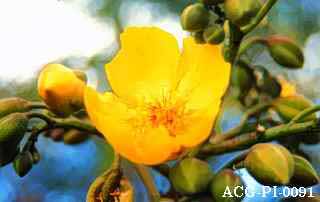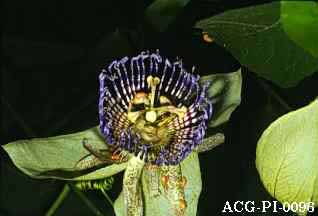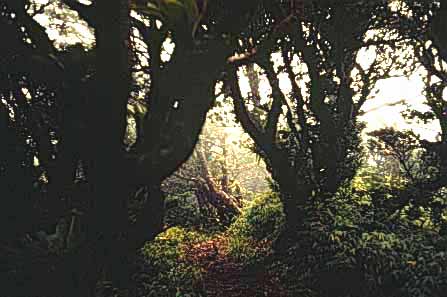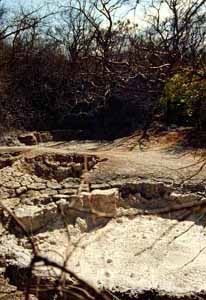
REFLECTION

February, 1997
When the Proyecto Parque Nacional Guanacaste: Restauracion Ecologicay Bio-cultural del Bosque Seco (Guanacaste National Park Project: Ecologicaland Bio-cultural Restoration of the dry forest) was started in 1986; whatwas started was also a dynamic and practical process to implement an experimentalmodel of Pilot Area (with all it's possible biological, administrative,economic and social implications) in the administration, management, understanding,and conservation of the area, by means of its direct incorporation withthe local and regional society.
 We were breaking off from the accumulated experienceof over 20 years from the Sistema de Conservacion Nacional (NationalSystem of Conservation), which was fragmented in 3 directions (NationalParks, Wildlife, and Forestry); completely centralized in the capital, regulatedand vertical in its functions and responsibilities, with, a minimum budget,low human resources, low capacity, and a lack of professionalism in differentactivities; without a proper course of action that would stimulate the developmentof the areas and in a context in which the priorities of our efforts werefocused mostly on the activities of administration and protection.
We were breaking off from the accumulated experienceof over 20 years from the Sistema de Conservacion Nacional (NationalSystem of Conservation), which was fragmented in 3 directions (NationalParks, Wildlife, and Forestry); completely centralized in the capital, regulatedand vertical in its functions and responsibilities, with, a minimum budget,low human resources, low capacity, and a lack of professionalism in differentactivities; without a proper course of action that would stimulate the developmentof the areas and in a context in which the priorities of our efforts werefocused mostly on the activities of administration and protection.
The system that was implemented in the first years of conservation inCosta Rica was functional in its context and its moment; we were going into1985 with many responsibilities and pressures that society, and in manycases because our outdated and inefficient administration, had imposed onthe System in response to the efforts made by the country over the past25 years to conserve representative samples of our ecosystems.
With the Pilot Project (so called at first by the originators) of theGuanacaste National Park we wanted to change, what had been up to now, thenorm in the conservation system in the tropics, at the same time we wantedto generate a change in the traditional system of administrating the goodsof the State. We were looking for decentralization in the decisions of theregional capital, incorporating the community in the management of the areaand promoting an autonomous area that would make its own technical, administrative,and financial decisions, all within a general framework which would encompassthe entire System.
At the beginning of this social and administrative "experiment",which was to be more than biological and in its posterior evolution wasgiven its support (intellectual, economic, and moral) by different "political,scientific and social strengths"; within institutions and people, local,national, and international, who saw in this Pilot Project the opportunityto create or mold, an administrative structure, a philosophy, a thought,an identification with the region, an evolving, constant model; who weren'tswamped in cold, rigid, and insensitive administrative aspects or in longprocesses of "planification theory", and believed in a dynamicand changeable reality.
The norm or the key element that we looked for in this "experiment"was to create an administrative model that would operate more on the experiencesobtained on the way; to have a mission, a common obkective, but knowingand accepting the fact that there are different ways to get there, an administrativeand management model that would go about its daily business under the axiom"LEARN BY DOING".
This premise is a radical break from the traditional style of runningan institution; (especially a State run institution) that is based on anexcess of proceedings, requirements, norms, duplicity of administrativefunctions and procedures, that on one hand, discourage and block what wecall clients or users of our services, and help promote workers or employeeeswho go about their work mechanically, viewing it only as completing proceduresand who generally don't step outside of the set plan of action. When someemployees have the iniciative and enthusiasm needed to start a technicalproject, they usually get tied up by these procedures, which become an endunto themselves.
Today, the "experiment", more united; more mature in experience;with all the backing and security that having the opportunity to successfullycomplete goals and projects that we proposed TOGETHER (from the local communitiesto the scientists, from the administrators of the Area to the highest governmentofficials) and at the same time having the opportunity to learn from ourmistakes and failures; it gave us the conviction that the best administrativemodel (be it a wildlife refuge, an industry or a business) is that whichis permanently innovative, which is dynamic and changing in response tothe realities and experiences, which confronts and accepts challenges ina way that generates the energy to strive forward; which learns from itsmistakes and seeks continuing evolution and in which the central figureis the EMPLOYEE, who is the person who, by their actions, attitudes,surrender, knowledge and talents, with the liberty to create and with theright to make mistakes; defines where this Institution is going.
In the search and establishment of a model which would adapt to the newnecessities, priorities and goals of the new System, we passed through variousstages. Since the "healthy administrative chaos" and the "politicalconfidence" at the beginning of the process, when we still didn't havespecialized and capable people as the directors of the administrative andeconomic aspects, nor did we have clear norms and procedures (we were establishingthem in the process); based on the "doubt" and the operation ofthe area underneath all of the papers, norms and administrative prodeduresthat had become obsolete for our evolution.
In all of our experiences we have tried to capitalize upon a positivebalance in accord with the form we are looking for. Although the Fundacionde Parques Nacionales (FPN) (National Park Foundation), played an importantrole in the beginning of the development of the "experiment";to be able to enjoy certain "liberties/flexibilities" that weren'tpossible under state standards; its position on many occasions was alsoa large obstacle to the development process; well, it went from being an"administrative entity" at the bottom; to "become an endunto itself", to become the 'principal entity of the process".Under this vision, the decentralization that pretended to occur in the managementand administration of the wildlife area of the state to the region; wasnewly centralized to the capital by the FPN, once again creating a relationshipbased on dependence, especially in the administrative, human resources,financial and economic aspects.
 Similarly, the ACG continued to develop experience andadministrative capacity, especially in the administrative field, stimulatedby a lack of capability in managing funds, by the slow response to the donorsand most of all because there was a real necessity in the ACG to have controlover its own economic descisions, after all, the "experiment"was already demanding a lot of work, energy and responsibilities which werefaced daily and it was not practical to continue depending on someone inSan Jose to sign the checks, especially when the person responsible onlydid it when he had time.
Similarly, the ACG continued to develop experience andadministrative capacity, especially in the administrative field, stimulatedby a lack of capability in managing funds, by the slow response to the donorsand most of all because there was a real necessity in the ACG to have controlover its own economic descisions, after all, the "experiment"was already demanding a lot of work, energy and responsibilities which werefaced daily and it was not practical to continue depending on someone inSan Jose to sign the checks, especially when the person responsible onlydid it when he had time.
As time went on, we felt the real need there be the ones responsiblefor the selection, managment and hiring of human resources; based on ourexperience, knowledge and needs for the different positions not the externalentity to reality, which was the FPN.
In this search for the human resources fit and able to work for the Area,the starting point was, on one hand, to prefer local people for the differentpositions, to give women equal opportunities and to most of all look forpeople who wanted to work enthusiasm, motivation, and interest; more thanfor a degree; even though the position they occupied may not coincide withtheir experience or profession.
The above aspect, joined with the identification and permanence of thepeople with different jobs, has made people the most important resourcethat the ACG counts on today.
Behind every project, activity or challenge, there are always peopleand the people are the ones that determine the success or failure of these.Behind each person, there are always thoughts and when these thoughts aredirected and stimulated toward a common end, they create a powerful forcethat can be put into action, into practice.
Based on the axiom "learn by doing" and with the confidencethat the work (the results) are the best supervisors/heads/evaluators thatan "employee" can have; we have developed a hybrid between a technicalstructure and a horizontal administration; which allows employees in differentlevels to make their own decisions, be creative and feel that their workis their fulfillment; which leads us to have people commited to the objectivesand the mission of the ACG, who don't work under rigid timetables; and areprepared to do more when necessary and by not having specific timetablesand hours, EVERYONE works more, not because there is a leader/boss tellingthem what to do, but because they consider it to be their responsibility.
This situation, seen through the eyes of someone used to other outlinesor with other experiences (and without the knowledge of how and why we changed,without the knowledge of our history, of where we came from, where we are,and where we are going) might, at first, see this as anarchy or a chaoticadministration.
That in which one person makes the administrative or technical decisions,small or large, is seen as a lack of administrative proceedings, a lackof order, a lack of rules and creates a sensation, in this type of evaluation,that the people "do what they think is most convenient for their program/activity,giving it a personal character", without following the linemeant ormacro objectives of the Area.
There has always been and always will be a "REAL COST" (asin every other activity) in working under this type of philosophy or outline;the art is to know where to find and maintain the balance between orderand spontaneity, between proceedings and confidence, between freedom ofindividual action and the philosophical and administrative boundaries whichrule the institution.
The ACG started as an experiment and today it is a LIVING ORGANISM, whichfeels, reacts and tries to adapt itself to the circumstances of the momentand is a "functional experiment" (and because of this has roomfor improvement) which has served and should serve as a model to implementin other areas of the system, the positive experiences can be "exported"and the errors and negative experiences that were committed in the processneed not be duplicated. In this same vein we should, and we are, consciousof the fact that we need to adapt the positive aspects of other experiencesgenerated in the system, when and where they can be adapted to our needsand aren't "fads" or respond to "traditional outlines"which have already been improved.
COMITE TECNICO / ACG.